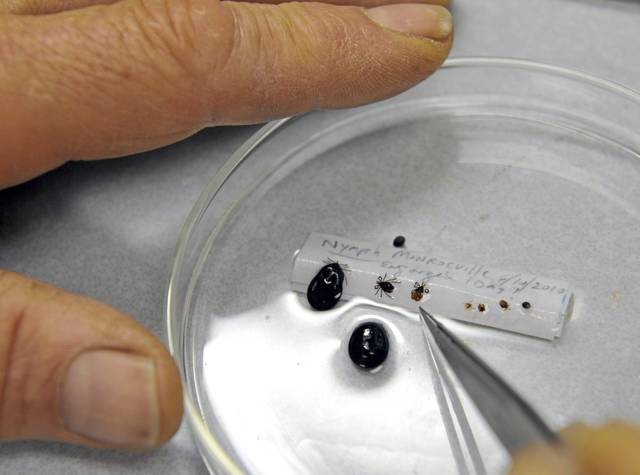Senators urge rapid implementation of measures to combat tick-borne illness
Share this post:
A bipartisan group of U.S. senators is urging the nation’s Department of Health & Human Services to quickly implement measures in the Kay Hagan Tick Act, aimed at improving research, prevention, diagnostics and treatment of tick-borne illnesses.
The legislation is named in honor of former Sen. Kay Hagan, who died in October 2019 due to complications from the Powassan virus, a tick-borne disease. The bill passed in late December as part of the Senate’s 2020 appropriations package. President Trump signed it into law shortly before Christmas.
Lyme disease is the fastest-growing vector-borne illness in the United States. Pennsylvania ranks first in the nation when it comes to Lyme cases.
The Tick Act, authored by Sens. Susan Collins, R-Maine, and Tina Smith, D-Minn., would:
- Require the Department of Health & Human Services to develop a national strategy to address tick-borne illness;
- Reauthorize regional “centers of excellence” in vector-borne disease for five years at $10 million per year; and
- Authorize Centers for Disease Control grants at $20 million per year awarded to state health departments to improve data collection and analysis, support early detection and diagnosis and raise awareness
In addition to the negative effects brought on by tick-borne illnesses, obtaining a proper diagnosis can also be an issue for patients.
“I was misdiagnosed by 23 doctors and specialists to the tune of $250,000 before getting an official diagnosis and proper treatment,” said Paula Jackson Jones, president and co-founder of Midcoast Lyme Disease Support & Education. “Enacting the Tick Act that Senator Collins introduced will provide a lifeline not only to patients but to medical providers.
“With funding available for research and education, we can get medical providers on the same page not only with improved diagnostic tools, but better, more effective treatment options for their patients. With the Tick Act, and Senator Collins’ support in Washington, we can stem the growing threat of tick-borne disease.”
Greg Shogan of Monroeville underwent approximately 20 brain scans before isolating Lyme disease as the cause of a series of strange ailments.
“It was definitely dozens of doctors, hundreds of tests and thousands of dollars,” Shogan told the Tribune-Review previously.
In an effort to ensure that resources and support are directed where needed most, both Collins and Smith stressed that up-to-date data is the core of the Tick Act.
The CDC’s most recent estimates of Lyme prevalence in the U.S. were released in 2015, and based on 2010 data, Collins and Smith wrote in a letter to Health & Human Services Secretary Alex Azar on Jan. 10.
“At that time, the CDC estimated that although 30,000 cases of Lyme disease are reported annually, the actual number of estimated cases is approximately 10 times higher, at 300,000,” they wrote. “Researchers and policy-makers continue to rely on this estimate, although it is now a decade old.”
The Center for Lyme Action, a lobbying group, will host a Feb. 11 dinner and awards ceremony where Collins will be presented with a “Congressional Lyme Champion Award” along with White House leadership, health and human services staff and others. Health and human services Deputy Secretary Eric Hargan will deliver the keynote address and is expected to announce a new public-private partnership related to combating Lyme disease.
Collins said she hopes the legislation can be implemented as soon as possible.
“I am grateful for the countless advocates who shared their struggles with these diseases and conveyed the urgent need for this comprehensive, bipartisan bill,” Collins said. “With a national effort the Tick Act would establish, we can slow the spread of these devastating tick-borne illnesses and protect our health.”


